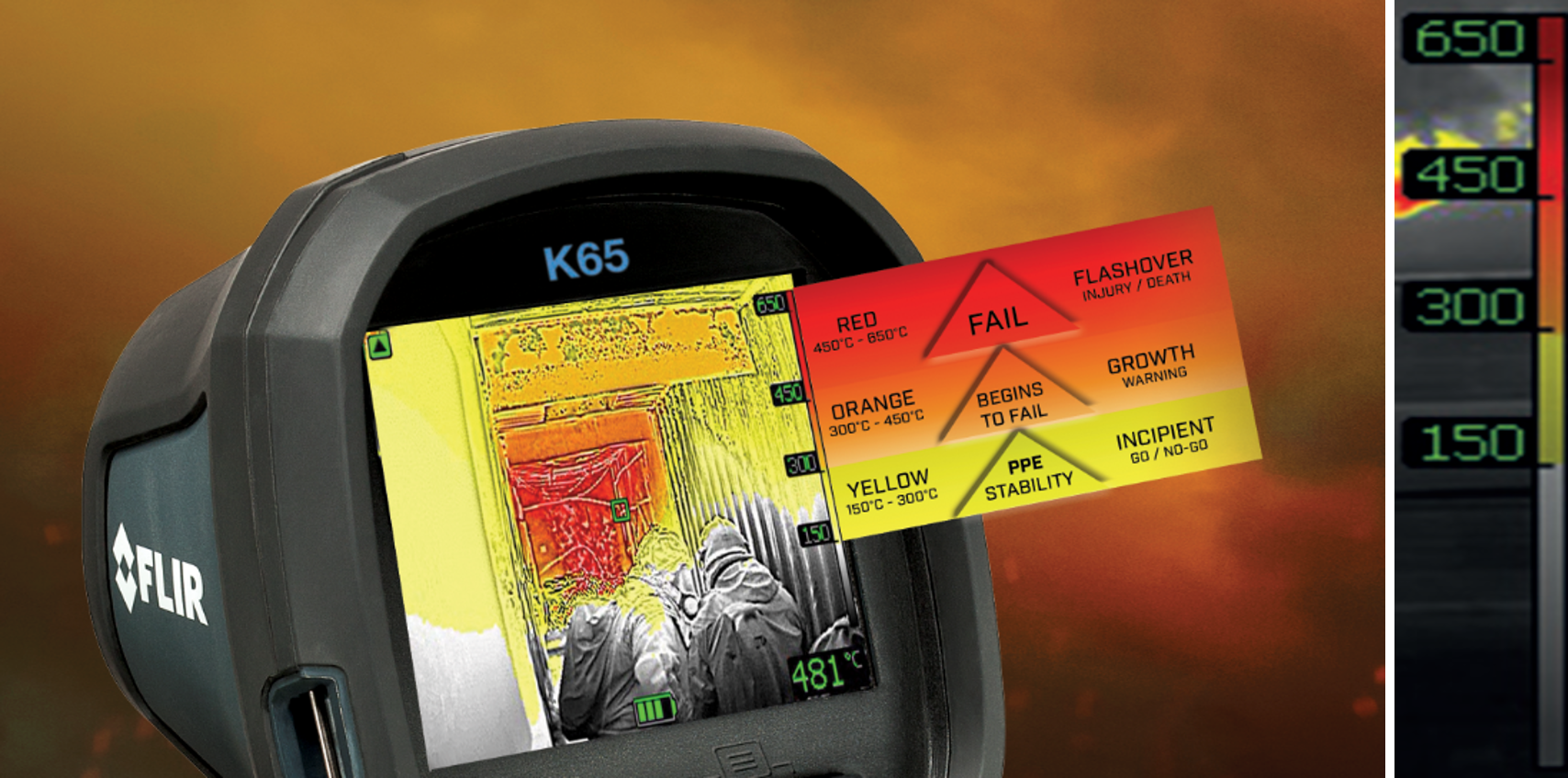Reliability: Reasons why FLIR thermal imaging cameras continue to be the first choice for firefighters

Since releasing its first K-Series thermal imaging cameras (TICs) back in 2013, FLIR has taken reliability very seriously. And over the years, FLIR has proven it has the experience and capability to produce trusted products that meet user expectations for advanced technology, robustness that can withstand harsh sites, and ease of use.
![]()
What makes FLIR the reliable choice?
The FLIR K-Series TICs offer the features firefighters need to see clearly through smoke and get reliable temperature readings.
 Temperature precision
Temperature precision
In firefighting, simply having TICs that accurately identify areas that are hotter than their surroundings are just not adequate enough. Where time is of the essence, having simple and highly reliable equipment is critical. The FLIR K-Series cameras display temperature information in a three-colors palette: red, orange, and yellow.

On the display screen, yellow represents temperatures between 150°C and 300°C (302°F to 572°F), orange represents 300°C to 450°C (572°F to 842°F), and red represents temperatures from 450°C to 650°C (842°F to 1202°F). This simplified format makes it easy for firefighters to quickly and accurately judge the danger level at the site.
Especially since much of the protective equipment used by firefighters is more likely to be damaged at temperatures above 450°C (842°F).

By accurately measuring the temperature of their surroundings, firefighters can protect themselves during rescue operations. The FLIR K-Series guarantees the precision of measurement, which is critical for the safety of firefighters.
This is possible thanks to FLIR's 50 plus years of experience as a trusted thermal product manufacturer.
 Image processing
Image processing
Thermal imaging devices are used in rescue operations because they can accurately identify people in need of rescue and the situation of a fire, even in environments filled with smoke and steam that cannot be seen with the human eye.
Image taken through smoke by the FLIR K55
However, since infrared images display temperature differences, not visual differences, it may be difficult to understand the surrounding situation—especially in places where the temperatures are consistent across the scene.
What is FSX?
Many FLIR K-Series* TICS are equipped with Flexible Scene Enhancement or FSXTM, a proprietary, advanced non-linear image processing algorithm that preserves detail in this high dynamic range imagery. It extracts details such as edges and corners from the original image, enhances them, and then re-integrates them with the original image to create pictures that are easier to understand.
*FSX is included in FLIR K45, FLIR K55, and FLIR K65.

Conventional thermal image (left) and image with FSX (right).
The image above demonstrates the advantage of FSX. If you compare them, you will notice that in the image on the right with FSX, you can see the windows, ceiling, and the texture on the ground with greater detail. On the other hand, in conventional thermal images such as the image on the left, the image is displayed only by the distribution of heat, so information other than the heat source is often unclear.
By processing contour images using only thermal images, FLIR's FSX can clearly see the inside of a building, even in a smoke-filled room or at night, enabling rapid rescue and firefighting operations.
FLIR has developed a wide variety of thermal imaging products for consumers, military, and industrial use. With more than 50 plus years of experience, FLIR can offer reliability critical for rescue operations.
![]()


